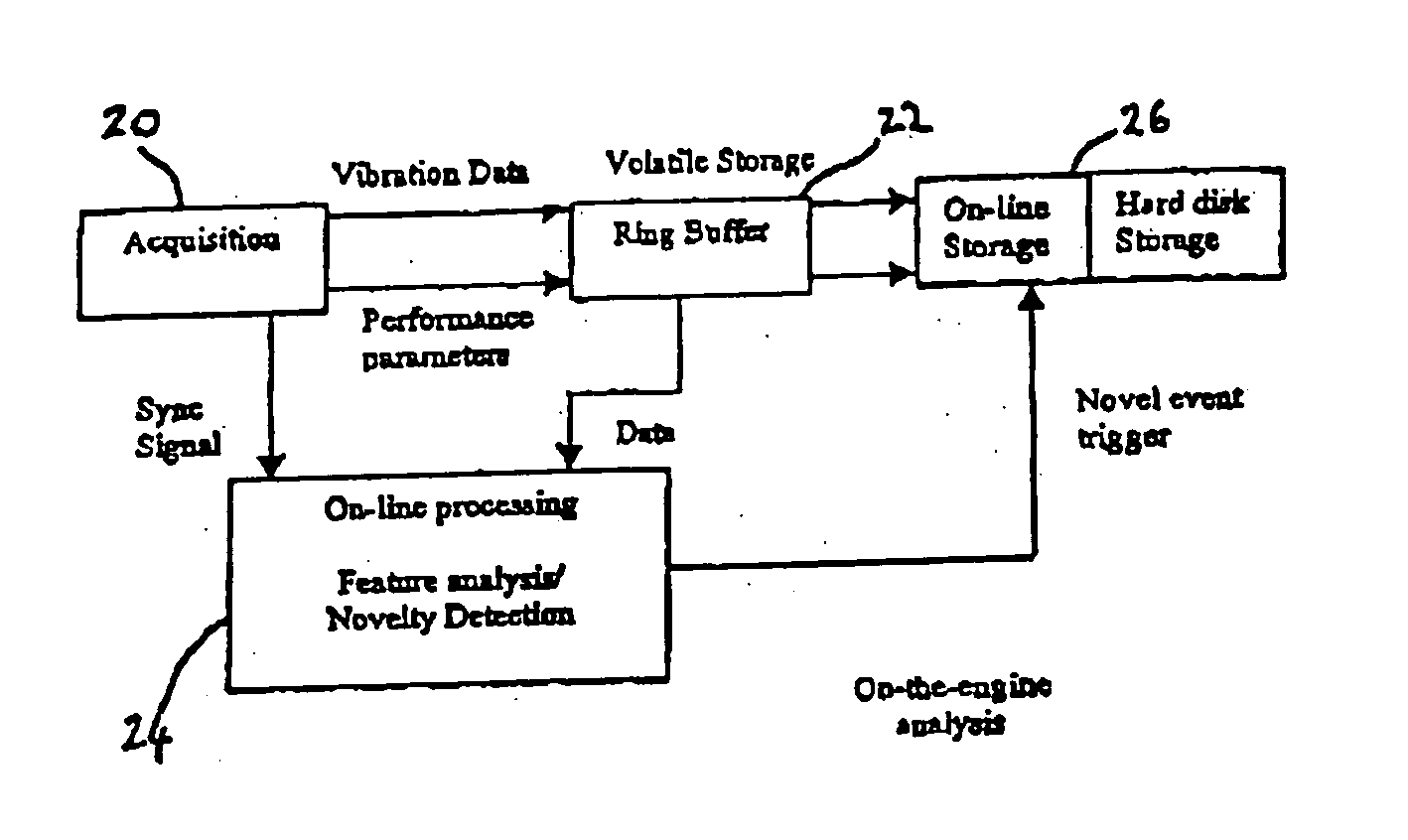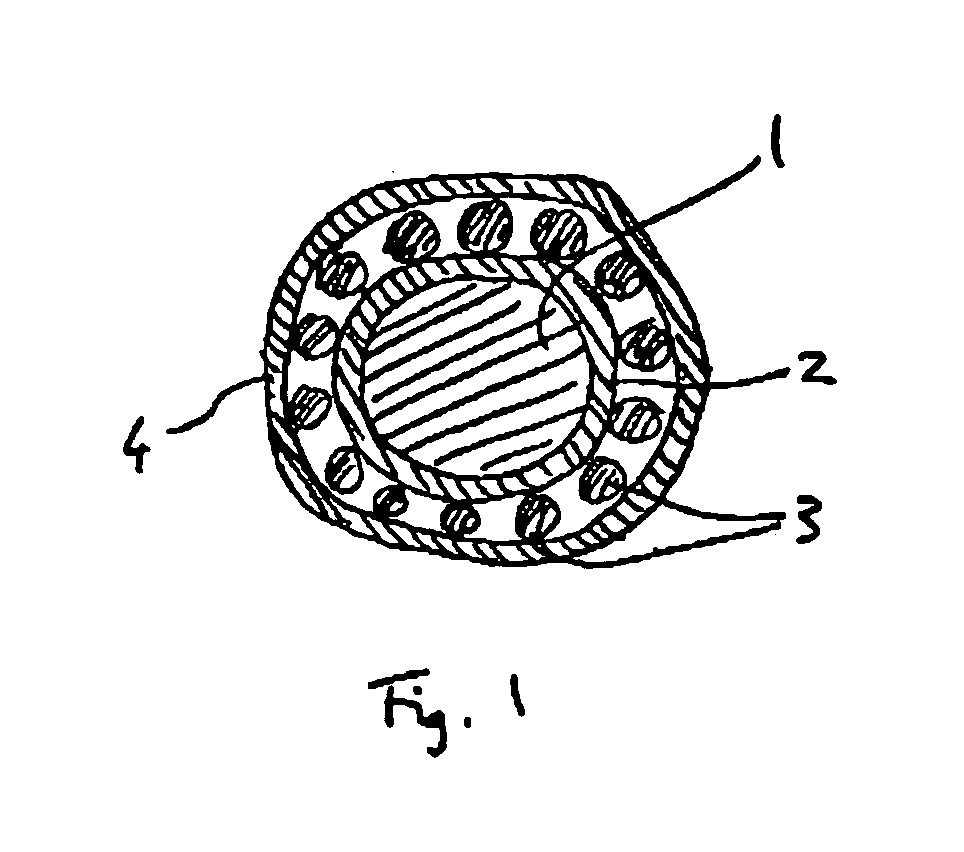Bearing anomaly detection and location
a technology for bearing anomalies and location, applied in the direction of machines/engines, digital computer details, instruments, etc., can solve the problems of affecting machine functioning, complex task of analysing the complete series of indicators to determine the condition of the engine, and high number of indicators that must be monitored to obtain an overall picture of the engine condition
- Summary
- Abstract
- Description
- Claims
- Application Information
AI Technical Summary
Benefits of technology
Problems solved by technology
Method used
Image
Examples
Embodiment Construction
[0068] The first embodiment described below is an example of a methodology for locating bearing anomalies (such as inner / outer bearing track defects, cage defects, rolling element defects and squeeze-film bearing anomalies) in a gas turbine engine.
[0069]FIG. 1 shows a schematic transverse cross section of the high pressure (HP) shaft 1 of the gas turbine. The shaft is located by a circular bearing which comprises an inner race 2, caged rolling elements 3 (cage not shown) and outer race 4. A defect can exist in either of the races or the cage and rolling elements.
[0070]FIG. 2 shows a schematic plot of frequency against time for the fundamental HP tracked order 5 (which is also the HP shaft rotation frequency) and a higher frequency nov 1 tracked order 6. Both tracked orders are measured by vibration sensors attached to the engine. The upward and downward slopes of the tracked orders respectively correspond to an increase and decrease in engine speed, and the darkness of each tracke...
PUM
 Login to View More
Login to View More Abstract
Description
Claims
Application Information
 Login to View More
Login to View More - R&D
- Intellectual Property
- Life Sciences
- Materials
- Tech Scout
- Unparalleled Data Quality
- Higher Quality Content
- 60% Fewer Hallucinations
Browse by: Latest US Patents, China's latest patents, Technical Efficacy Thesaurus, Application Domain, Technology Topic, Popular Technical Reports.
© 2025 PatSnap. All rights reserved.Legal|Privacy policy|Modern Slavery Act Transparency Statement|Sitemap|About US| Contact US: help@patsnap.com



